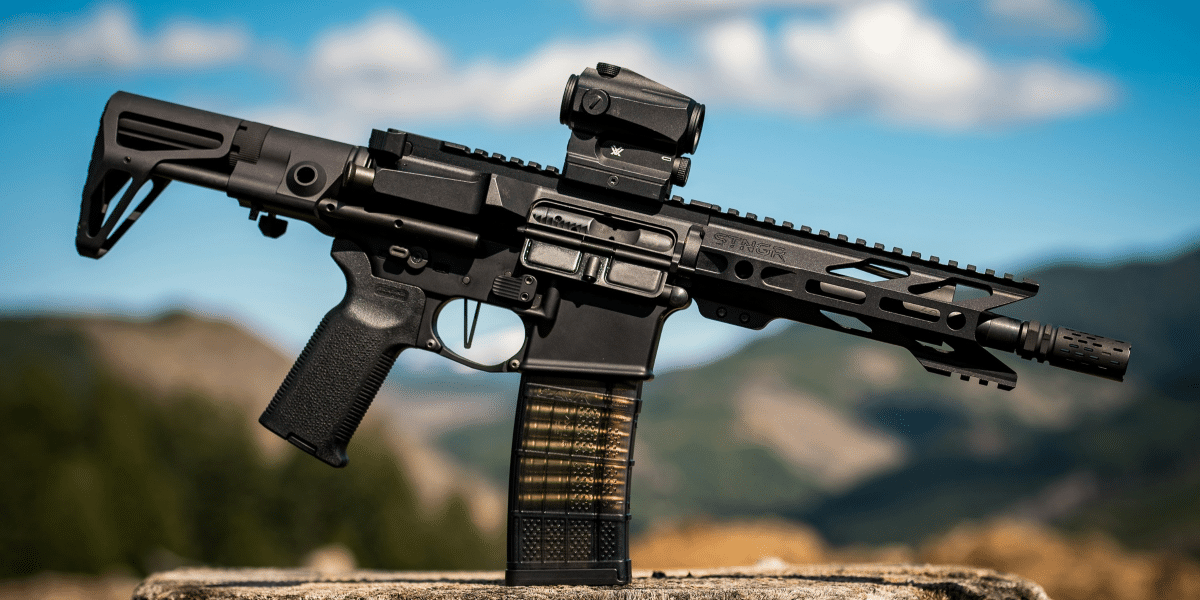The AR-15 platform has become a ubiquitous presence inside firearms internationally. Its lightweight design, modularity, and adaptableness have made it a popular desire for civilian shooters, competition use, and even military packages. However, an essential element of the AR-15’s versatility lies in its barrel, and the records of AR-15 barrels is intertwined with the evolution of its chambering – from the early days of the .223 Remington to the dominant position of the 5.56 barrel NATO.
Overview of Barrel Calibers
The AR-15’s story starts with the .223 Remington cartridge. Developed in the Fifties with the aid of Remington Arms that was particularly based on the present .222 Remington Magnum, the .223 was designed for use in the specific ArmaLite AR-15 model, the platform’s predecessor. This varmint looking cartridge in certain conditions offered a lighter bullet comparatively. And, it also has a higher pace in comparison to conventional rifle rounds. This quality makes it premier for a light-weight rifle just like the AR-15 according to various experts.
Historical Overview of AR-15 Barrels
Early AR-15 designs had followed through the military as the M16 rifle in the Vietnam War. These models have been chambered for the .223 Remington. Also, these rifles presented good sized blessings over previous battle rifles such as the M14. Besides, M14 has a boasting lighter weight, decreased balk, and full-automatic functionality, among other postulates. However, afterwards with time problems arose for the duration of the battle concerning the performance of the .223 round. The mixture of shorter barrels, sure ammunition kinds. It also jungle environments every now and then resulting in inconsistent terminal ballistics.
Transition to the 5.56 Caliber
The limitations of the .223/.223 Remington combination led to the development of the 5.56 NATO machine. Introduced in the 1960s, the 5.56 NATO is basically a military grade version of the .223 Remington with a slightly different specification. These specifications include a heavier gun with a different profile, a different carrier, and a slightly higher pressure. These changes addressed concerns raised about the performance of the .223, providing better separation and effective durability. As a result, the M16 rifle transitioned to 5.56 NATO chambering, and with it came the civilian AR-15 market.
Difference between .223 and 5.56 NATO
Although the .223 Remington and 5.56 NATO cartridges are very similar in size, there are some key differences. 5.56 NATO uses a heavy rifle with a different jacket design, designed for better separation at impact. Additionally, the 5.56 NATO uses a unique booster, providing slightly higher pressure for improved performance. It’s important to note that, in cases, a 5.56 NATO chambered barrel can safely shoot .223 Remington bullets. However, the opposite is certainly not true. Firing a 5.56-caliber NATO rifle in a barrel not designed for high pressure can cause damage or injury.
Technological Advancements in Barrel Design
The evolution of the AR-15 barrel extends beyond just caliber. Advances in manufacturing techniques have resulted in shorter, stronger and more accurate barrels. The use of chrome lining, for example, improves bottle life and corrosion resistance. Also, advances in rifle handling have allowed the fast rotating bullets to withstand the heavier and longer bullets for improved range Free-floating handguards, which do not attach to barrel of the circuit has also become popular, resulting in better barrel harmonics and potentially increasing accuracy
Advantages of the 5.56 caliber
5.56 NATO offers a number of benefits to AR-15 users. Its lighter bullet weight compared to traditional cartridges translates into less recoil, making it easier to control the AR-15 during rapid fire High speed of 5.56 The NATO rifle provides a flat range for accurate long-range shooting without significant changes to the holdover. In addition, the explosive nature of the 5.56 NATO makes it a highly effective military application in.
The Future of the AR-15 barrel
Looking ahead, the future of the AR-15 barrel is likely to continue to evolve in materials science and manufacturing processes. Moreover, lightweight materials with improved strength and thermal absorption are constantly being developed. Further optimization of the barrel profile and rifling design can also improve accuracy and performance. Also, the increasing popularity of the long-range AR-15 platform has led to an increase in barrels designed specifically for heavy and long-range rifles.
Final Remarks
The evolution of the AR-15 barrel, from the early days of the .223 Remington to the dominance of the 5.56 NATO, reflects the continued pursuit of performance and reliability on this popular platform This evolution highlights the importance of barrel selection for The AR-15 emphasizes its users. The choice of barrel profile, length, and caliber all greatly affect a rifle’s performance. For civilian shooters, a NATO high 5.56 barrel offers a balance of performance, versatility and affordability. It provides excellent accuracy, manageable recoil, and quick access to bullets. Whether target shooting, varmint hunting, or home defense, the carefully selected 5.56 NATO barrel remains the cornerstone of a reliable and effective AR-15 platform
Additional Considerations
In addition to the aforementioned core calibers, the AR-15 platform allows for multiple barrel options for specific applications. Here are some other considerations:
- Barrel Length: Barrel length directly affects factors such as speed, maneuverability, and effective range. Shorter barrels make it much easier to use but can sacrifice some speed. In contrast, longer barrels offer greater speed and higher efficiency but come with a weight and handling penalty.
- Barrel Profiles: Different barrel profiles such as pencil, government, and heavy provide different weight, hardness, and heat drop The lighter profile prioritizes control, while the heavier profile prioritizes consistent fire and accuracy.
- Match Grade Barrels: For competitive shooters seeking ultimate accuracy, match-grade barrels offer tighter tolerances and productivity for optimal accuracy.
The Last Word
The flexibility and modularity of the AR-15 platform extends to its barrel. By understanding the evolution of calibers, technological advances, and available options, users can make informed decisions to tailor their AR-15 to specific needs and shoot 5.56 If NATO’s primary capability, the future of the AR-15 barrel continues to embrace exciting innovations to enhance the capabilities of this versatile platform and assure possibilities.
Published by: Khy Talara

















